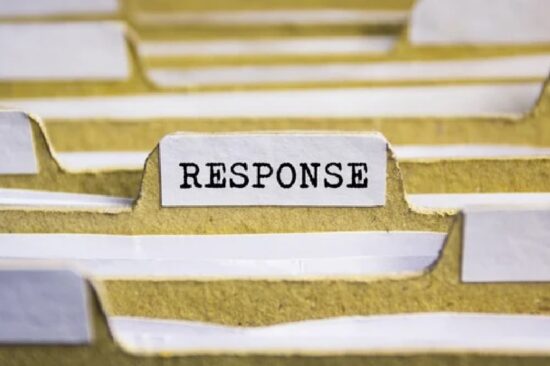
In the world of modern business, information technology (IT) is the backbone of operations. From managing data to communication and critical applications, IT systems are integral to daily functions. However, like any complex system, IT is vulnerable to disruptions, whether caused by natural disasters, cyberattacks, or technical failures. To mitigate the impact of these disruptions and ensure business continuity, organizations must implement robust IT disaster recovery best practices. In this article, we will explore these best practices and the steps to take in preparing for the worst.
- Risk Assessment: Know Your Vulnerabilities
The first step in preparing for an IT disaster is understanding the potential risks your organization faces. This includes assessing both internal and external threats. Internal threats can be hardware failures, software glitches, or employee errors. External threats range from natural disasters like hurricanes, earthquakes, and floods to malicious cyberattacks, such as ransomware or distributed denial-of-service (DDoS) attacks. By identifying these risks, you can prioritize your disaster recovery efforts accordingly.
- Business Impact Analysis: Identify Critical Systems
Not all IT systems are created equal. Some are more critical to your business operations than others. A business impact analysis (BIA) helps identify which systems, applications, and data are most vital for your organization’s day-to-day functions. This information is invaluable when creating a disaster recovery plan, as it guides the allocation of resources and priorities during recovery efforts.
- Develop a Disaster Recovery Plan
Once you understand your vulnerabilities and the critical systems in your organization, it’s time to create a comprehensive disaster recovery plan. This plan should outline the steps to take during and after an IT disaster, including:
- Contact information for key personnel
- Emergency response procedures
- Backup and recovery processes
- Communication strategies
- Offsite data storage and retrieval methods
- Vendor and supplier relationships for quick equipment replacement
- Regular Backups: Protect Your Data
Regular data backups are fundamental to disaster recovery. Automated backup systems ensure that your data is saved at scheduled intervals and stored offsite. This reduces the risk of data loss during a disaster and allows for a faster recovery process. It’s crucial to test the backup process regularly to confirm data integrity and accessibility.
- Cybersecurity Measures: Defend Against Attacks
In today’s digital landscape, cyberattacks are a significant threat to IT systems. Employ robust cybersecurity measures to safeguard your data and systems. This includes firewalls, intrusion detection systems, and regular security audits. Employee training is also essential to ensure that staff members are aware of potential risks and know how to recognize and respond to security threats.
- Redundancy and Failover Systems: Ensure Continuous Operations
Redundancy is a critical component of disaster recovery. Implementing failover systems, where necessary, can help ensure uninterrupted operations. For example, having multiple data centers or cloud-based solutions can provide redundancy and failover options, allowing for continuity in the event of a system failure.
- Regular Testing and Training: Stay Prepared
A disaster recovery plan is only effective if it is regularly tested and updated. Conduct tabletop exercises and simulate disaster scenarios to assess the plan’s effectiveness and identify areas for improvement. Ensure that your staff is well-trained and familiar with their roles and responsibilities during a disaster.
- Documentation and Documentation: Keep Records
Clear and detailed documentation is crucial during a disaster. Keep records of your IT infrastructure, configurations, and procedures. This documentation will be invaluable when restoring systems and data, as it provides a blueprint for recovery efforts.
- Collaboration and Communication: Coordinate with Stakeholders
Disaster recovery doesn’t happen in isolation. It often involves coordination with various stakeholders, including employees, vendors, and customers. Develop a communication plan that keeps everyone informed during a disaster, providing updates on the recovery progress and expected downtime.
- Compliance and Legal Considerations: Follow Regulations
Depending on your industry, there may be legal and compliance requirements related to disaster recovery planning and data protection. Ensure that your disaster recovery plan complies with relevant regulations and standards.
In conclusion, IT disaster recovery is an essential part of modern business operations. Organizations must be proactive in preparing for the worst, as disruptions can have a profound impact on productivity, reputation, and financial stability. By following these best practices and regularly updating your disaster recovery plan, you can significantly reduce the potential damage of an IT disaster and increase your chances of a swift and successful recovery.
I am a system administrator with ten years of experience in the IT field. After receiving a Bachelor’s degree in Computer Science, I worked at multiple Silicon Valley companies and helped launch several startups. Currently, I am employed as a system administrator at one of the major tech companies in Texas. My primary expertise is Windows Server and Desktop Administration with extensive knowledge of Azure, Active Directory, Office365, DNS, DHCP, Group Policy, Endpoint Manager (Intune) and Microsoft Endpoint Configuration Manager (SCCM).
The opinions expressed in this post belongs to the individual contributors and do not necessarily reflect the views of Information Security Buzz.


